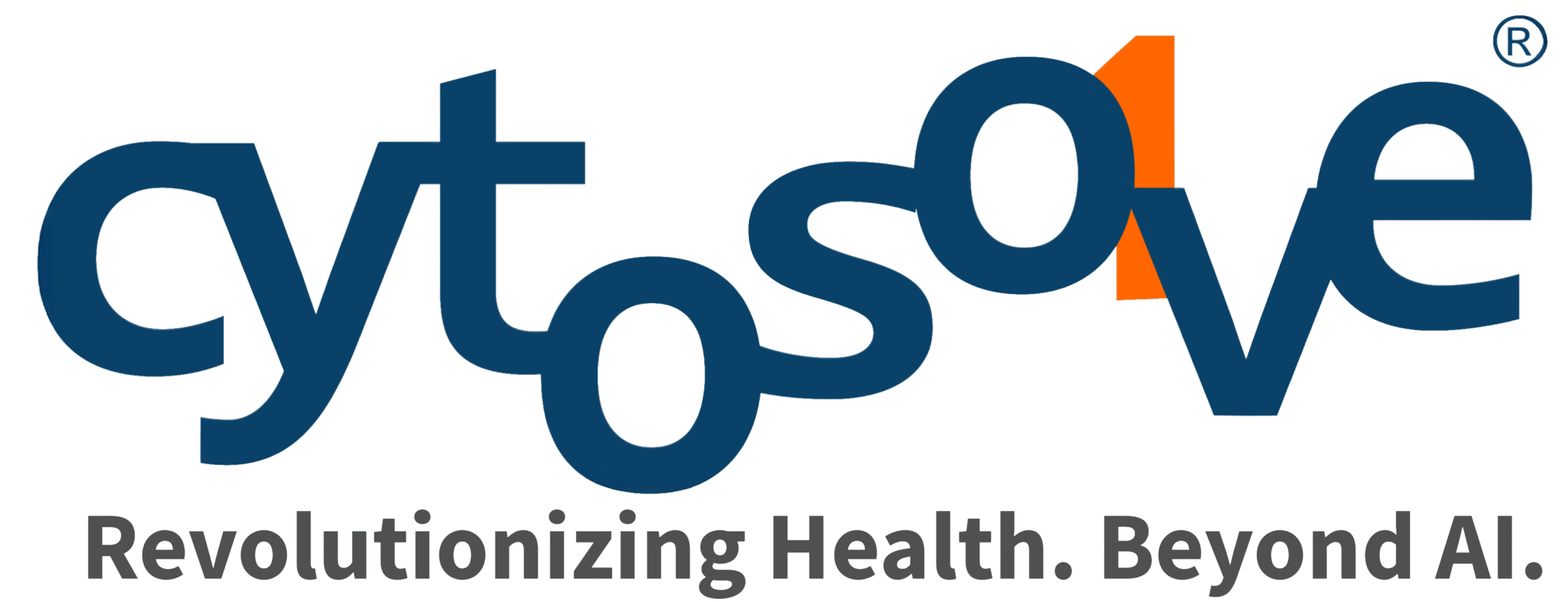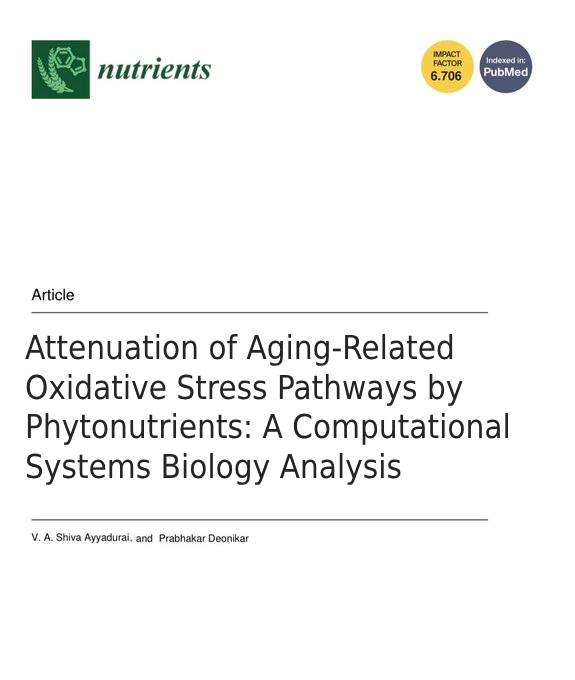Attenuation of Aging-Related Oxidative Stress Pathways by Phytonutrients: A Computational Systems Biology Analysis
V.A. Shiva Ayyadurai, and Prabhakar Deonikar
Nutrients
https://www.mdpi.com/2072-6643/15/17/3762
Background
Aging results from gradual accumulation of damage to the cellular functions caused by biochemical processes such as oxidative stress, inflammation-driven prolonged cellular senescence state, immune system malfunction, psychological stress, and epigenetic changes due to exposure to environmental toxins. Plant-derived bioactive molecules have been shown to ameliorate the damage from oxidative stress. This research seeks to uncover the mechanisms of action of how phytochemicals from fruit/berry/vegetable (FBV) juice powder mitigate oxidative stress. The study uses a computational systems biology approach to (1) identify biomolecular pathways of oxidative stress; (2) identify phytochemicals from FBV juice powder and their specific action on oxidative stress mechanisms; and (3) quantitatively estimate the effects of FBV juice powder bioactive compounds on oxidative stress. The compounds in FBV affected two oxidative stress molecular pathways: (1) reactive oxygen species (ROS) production and (2) antioxidant enzyme production. Six bioactive compounds including cyanidin, delphinidin, ellagic acid, kaempherol, malvidin, and rutin in FBV significantly lowered production of ROS and increased the production of antioxidant enzymes such as catalase, heme oxygenase-1, superoxide dismutase, and glutathione peroxidase. FBV juice powder provides a combination of bioactive compounds that attenuate aging by affecting multiple pathways of oxidative stress.
Materials and Method
The methodology used to identify the mechanisms of action of both ROS and antioxidant enzyme production, as well as to quantitatively predict the effects of bioactive compounds from FBV juice powder, involves the use of the well-established CytoSolve protocol [51,52,55], described in detail in Ayyadurai and Deonikar, 2022 [56]. The Supplementary Materials herein provide a detailed summary of the CytoSolve protocol.
Results
The systematic bioinformatics literature review yielded an initial set of 176 articles derived by executing fifteen (15) independent searches, as denoted in Table S4, after removing duplicates. The titles and abstracts of these 176 articles were reviewed, and a final set of 93 articles was identified and reviewed comprehensively.

